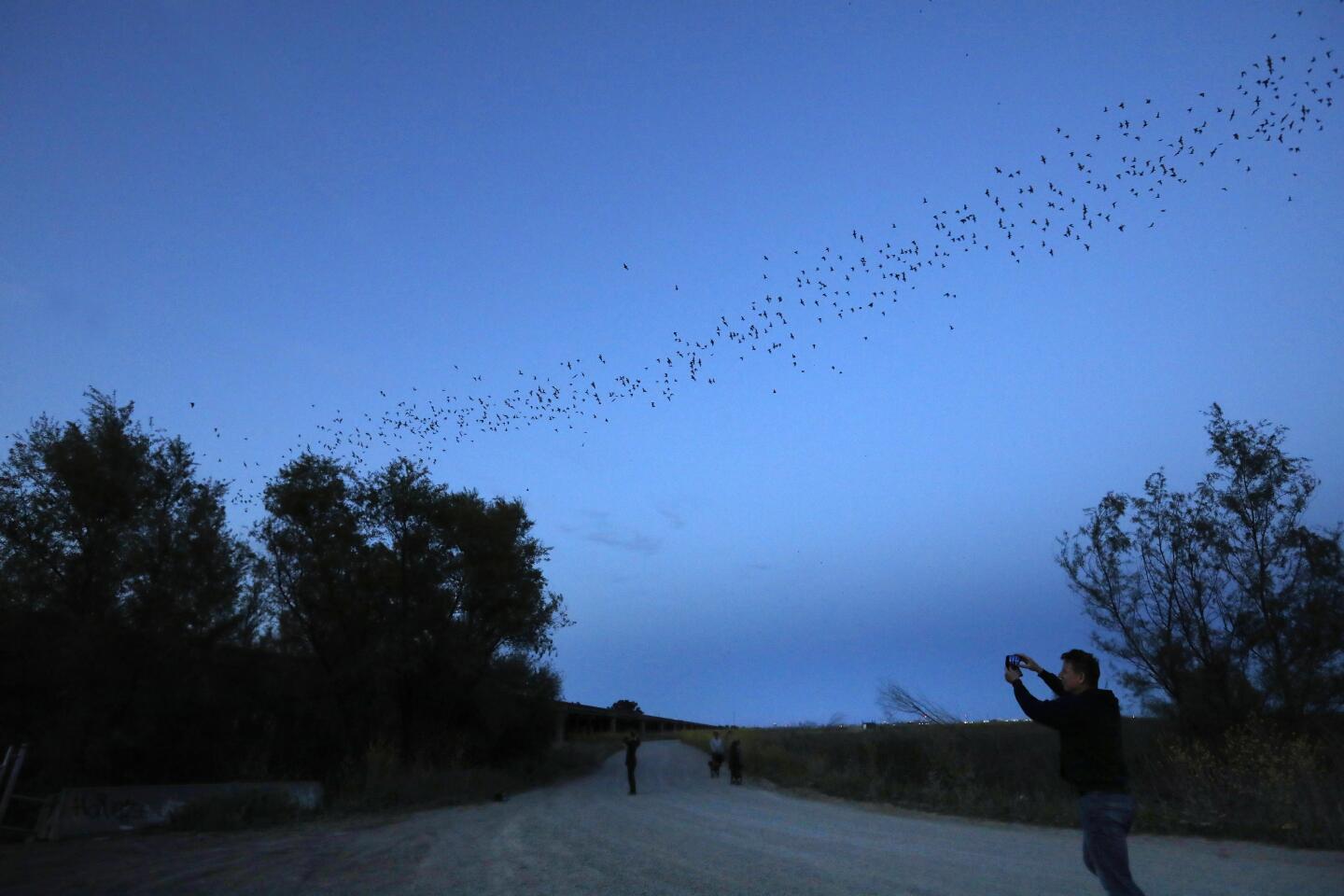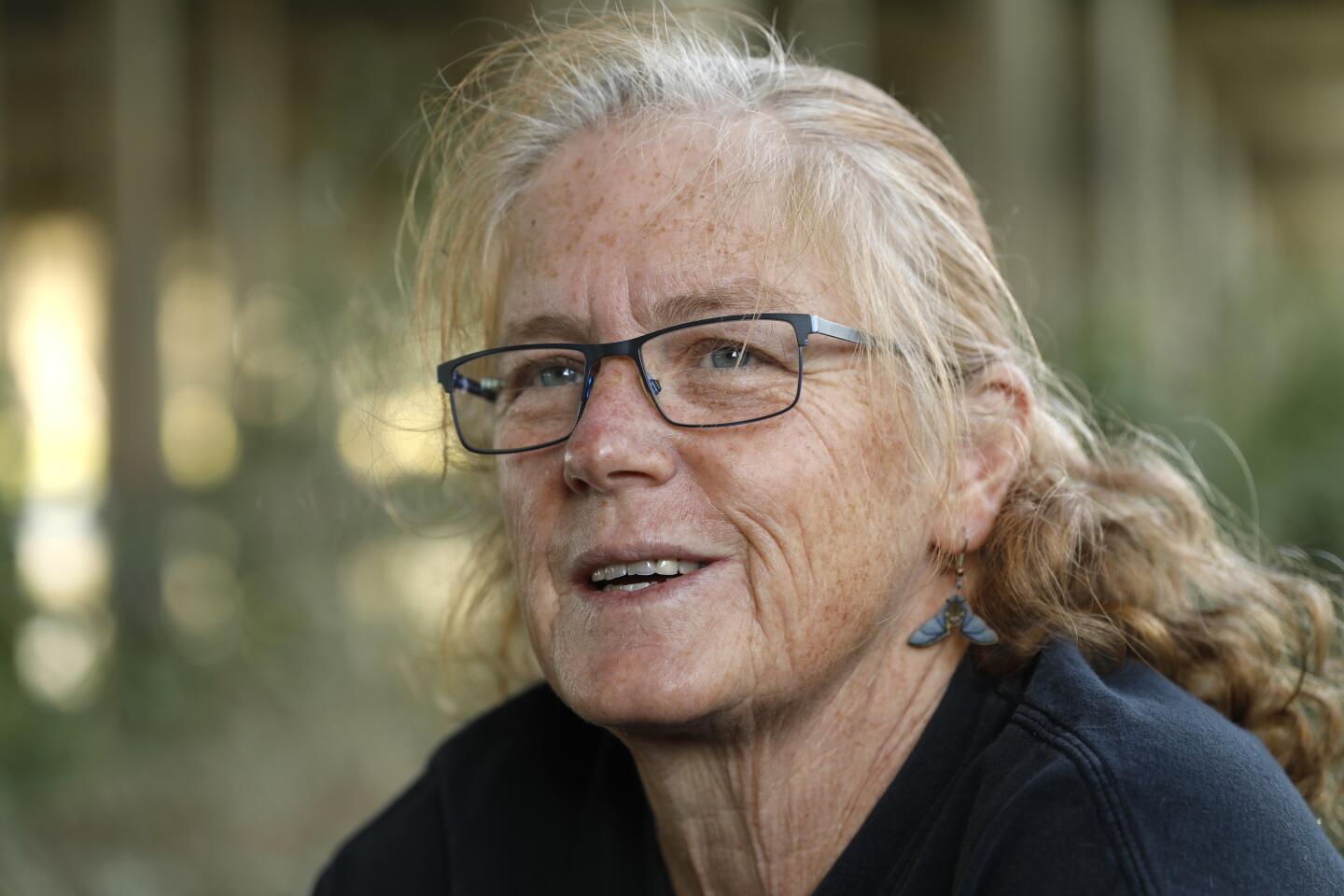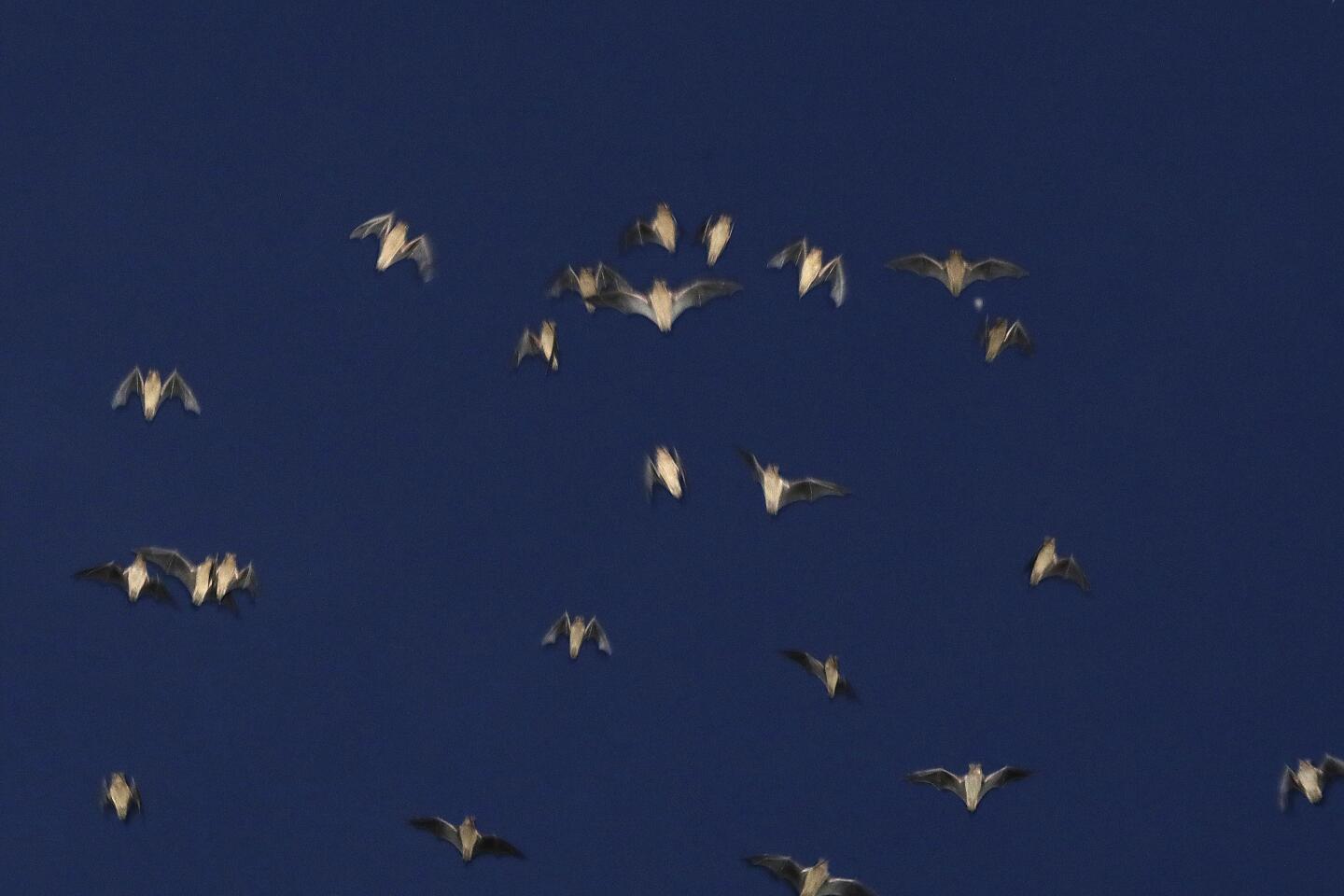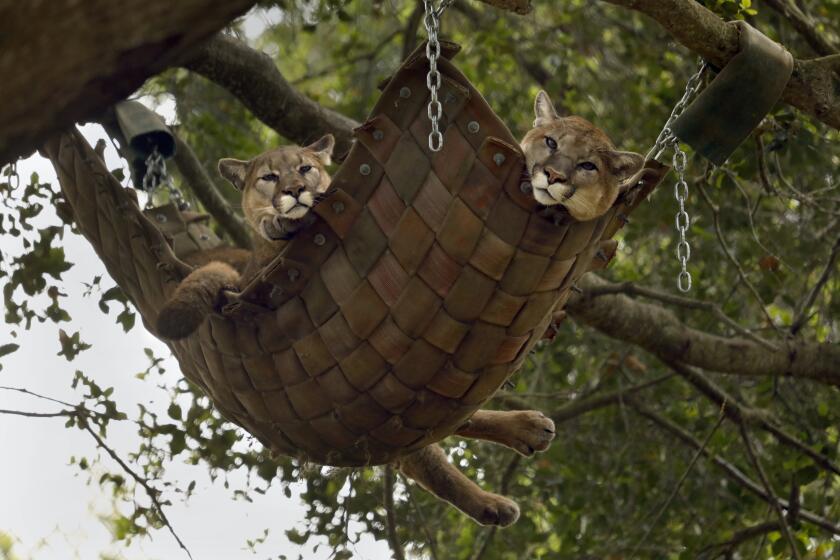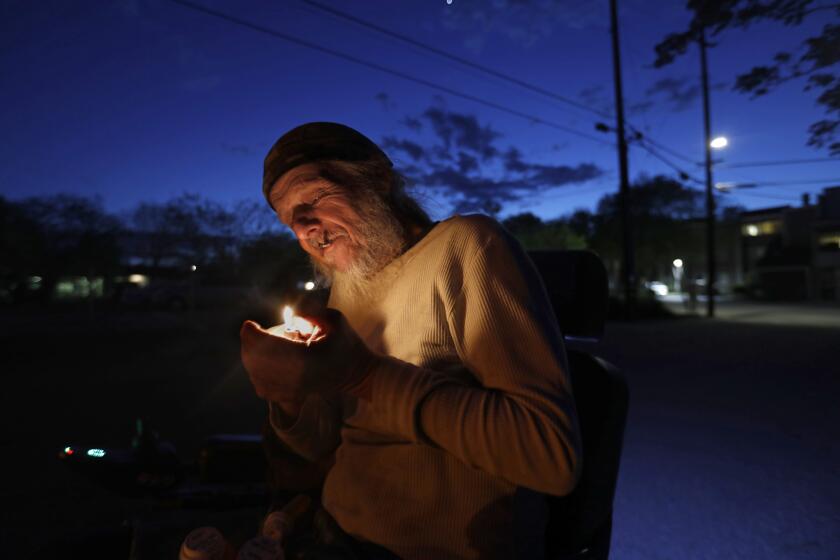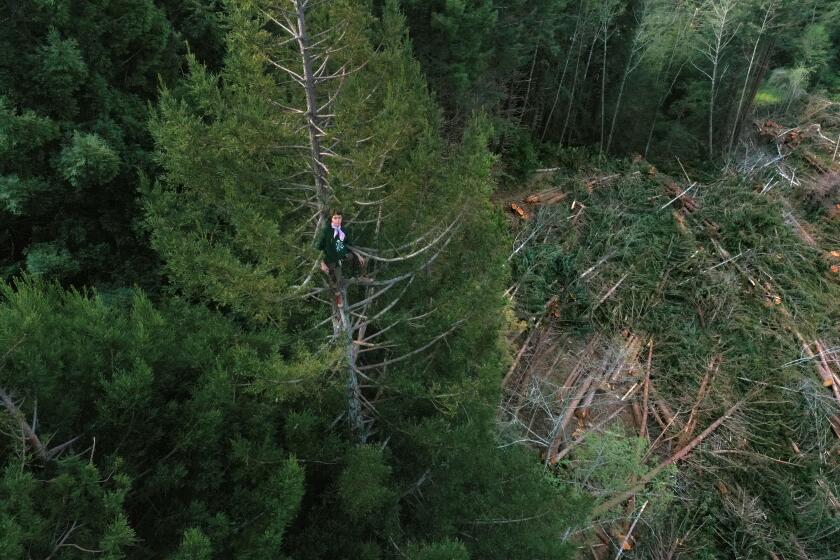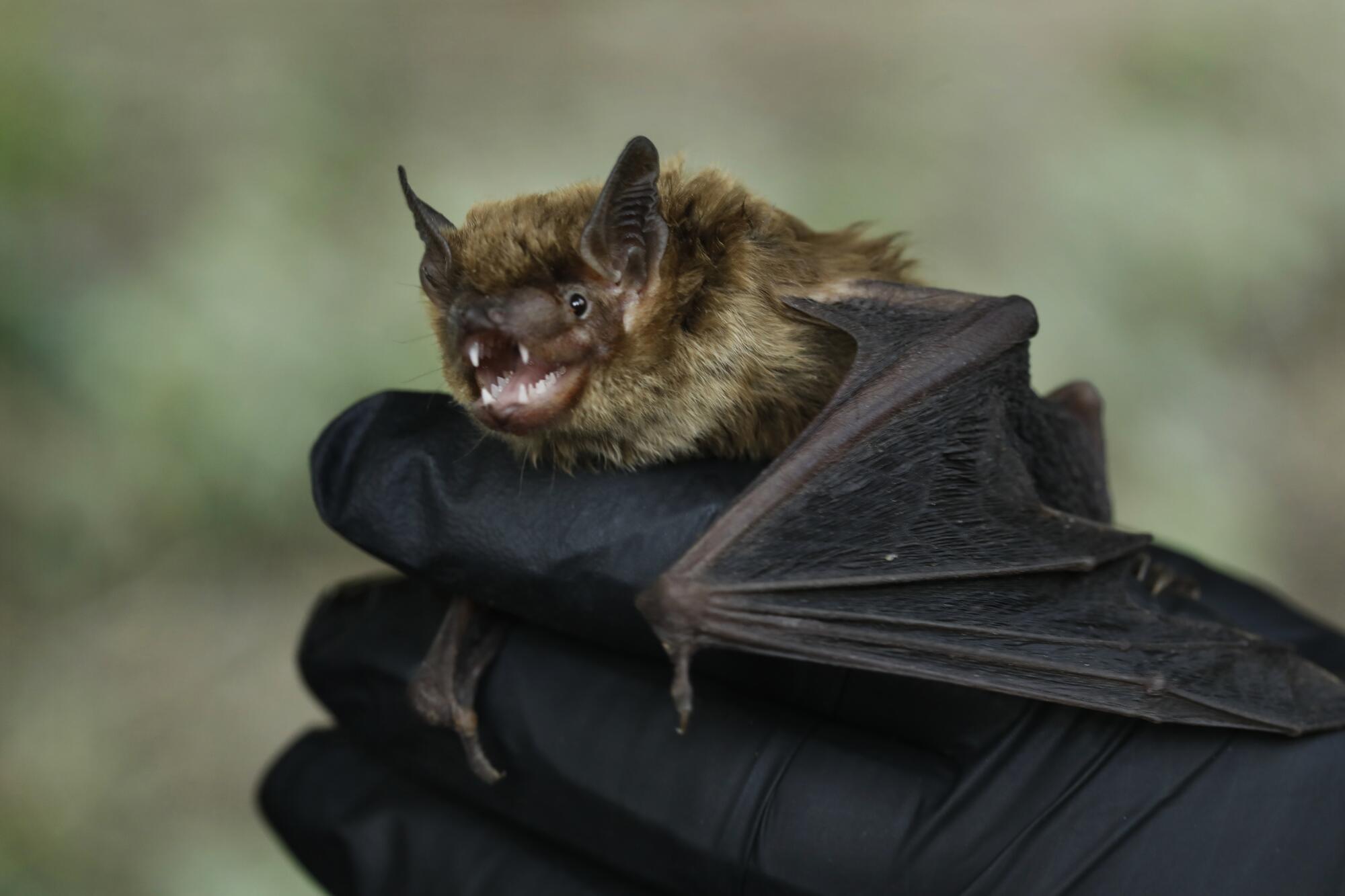
- Share via
LAVA BEDS NATIONAL MONUMENT — As forensic virologists search to uncover the origins of COVID-19, bats have been fingered as a likely source. Genetic analyses show the virus is very similar to one harbored by Chinese horseshoe bats, and researchers think it’s possible it jumped from those winged mammals to people.
But some bat lovers and chiropterologists — scientists who study the flying mammals — are adamant there is no proof. Instead, they’re wringing their hands about the reverse: That people with COVID-19 could spread the disease to their furry, nocturnal housemates.
They are particularly worried about already vulnerable North American bat populations, which are being wiped out by white-nose syndrome, a disease caused by a deadly fungus.
There is no evidence indicating that bats can get the coronavirus from people, said Alice Chung-MacCoubrey, a bat biologist for the National Park Service, and an affiliate faculty at South Oregon University. “But it’s something we’re concerned about.”
On Saturday evening, hundreds of thousands of Mexican free-tailed bats streamed out from underneath the Yolo Bypass, a bridge spanning the wetlands and flood-control channel just west of Sacramento.
As darkness approached, a half-dozen amateur photographers appeared by the bridge, hoping to get good shots of the swarm. A small debate ensued about whether it would be better to catch the bats with a wide-angle versus zoom lens.
Reports indicate that COVID-19 has the ability to jump from humans to other species, including pet cats and a Malayan tiger at the Bronx Zoo. And because people can live in close proximity to bats — the flying mammals often live in attics and crawl spaces — common sense suggests it could jump to them too.
None of the photographers seemed concerned about passing the virus to the bats. Or, for that matter, to one another. Only one of them wore a mask.
However, Corky Quirk, program coordinator for the Yolo Basin Foundation, and a bat aficionado, wore a mask and gloves while she handled a few of her “ambassador” bats — injured bats that can’t be released back into the wild, but live within the comfort of her home.
This month, the federal Fish and Wildlife Service sent out a directive advising scientists to suspend all bat studies, concerned that researchers could spread the disease to their already vulnerable study subjects.
And Chung-MacCoubrey said the Geological Survey has organized a team of experts to evaluate the risk and establish preventive measures. They’re hoping to release a report by May.
It wouldn’t be the first time humans have introduced a disease to bats.
Although Pseudogymnoascus destructans, a cold-climate-loving fungus that causes the deadly white-nose syndrome in bat populations across the United States, didn’t originate in people, it is spread by them.
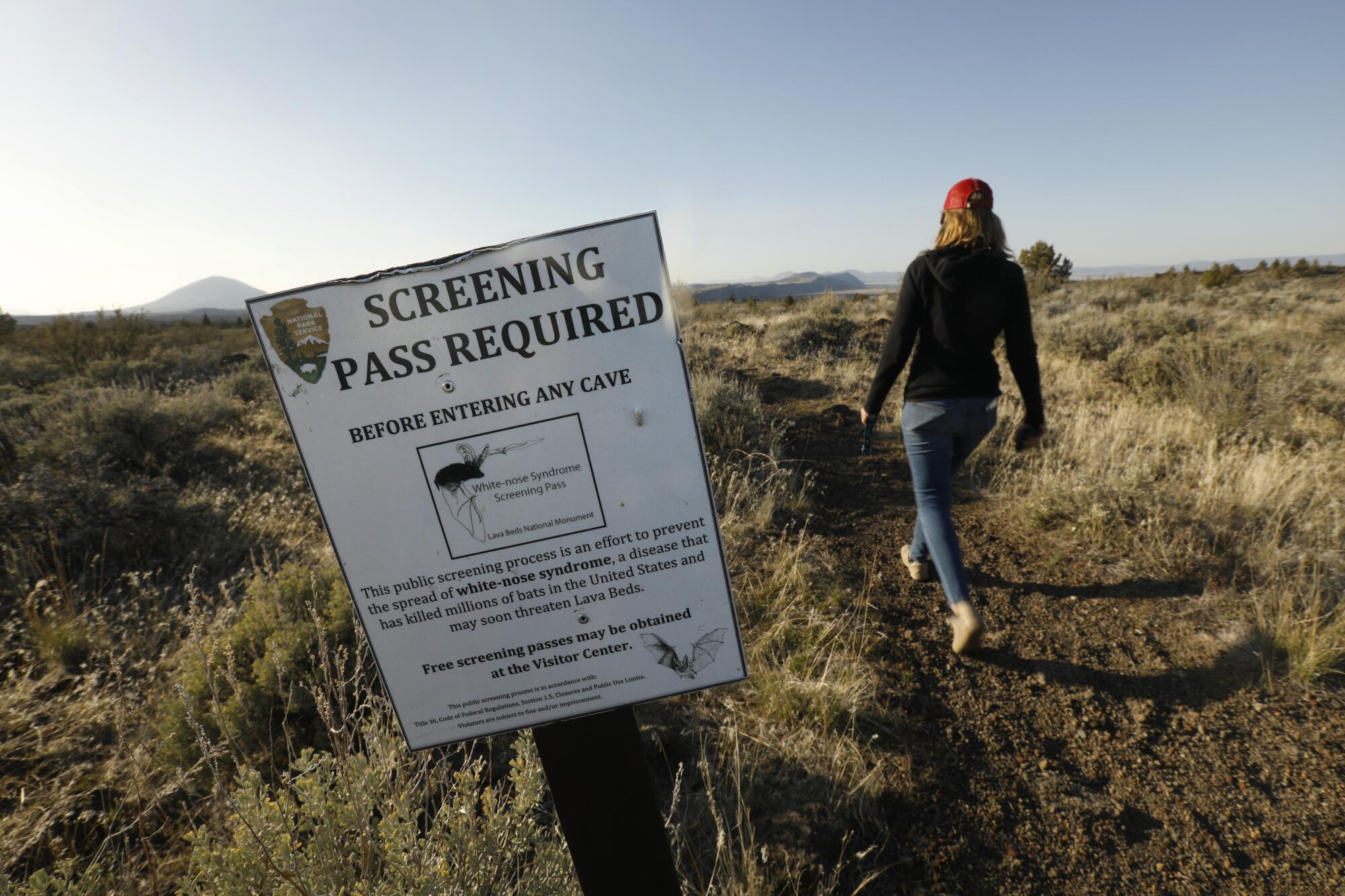
On a recent evening, in Siskiyou County’s Lava Beds National Monument, just south of the Oregon border, signs at the park and cave entrances directed visitors to be screened at the park center for the fungus, before descending into caves.
Coronavirus Journal
Two Times journalists are embarking on a journey throughout California to cover the nation’s most populous and diverse state during the coronavirus crisis.
Because of the coronavirus outbreak, the park center was closed. However, a reporting team from The Times had not been in any caves or mines outside the United States since 2006 — the criteria used by the National Park Service to determine access.
The caves were cold and dark, and no bats were seen, although there were signs of their presence — staining on the walls and guano on the floor.
The cruelty of the fungus, said Chung-MacCoubrey, is that it thrives on the bodies of hibernating bat species — whose body temperatures drop in the winter, as their bodies go into torpor. Then, in bat species that are social, the fungus spreads as they interact — grooming and sleeping in giant colonies with one another.
If bats could practice social distancing, like humans, she said, the virus wouldn’t be such a menace.
Although news reports have suggested the fungus has spread to California bats, Chung-MacCoubrey said researchers are still not sure.
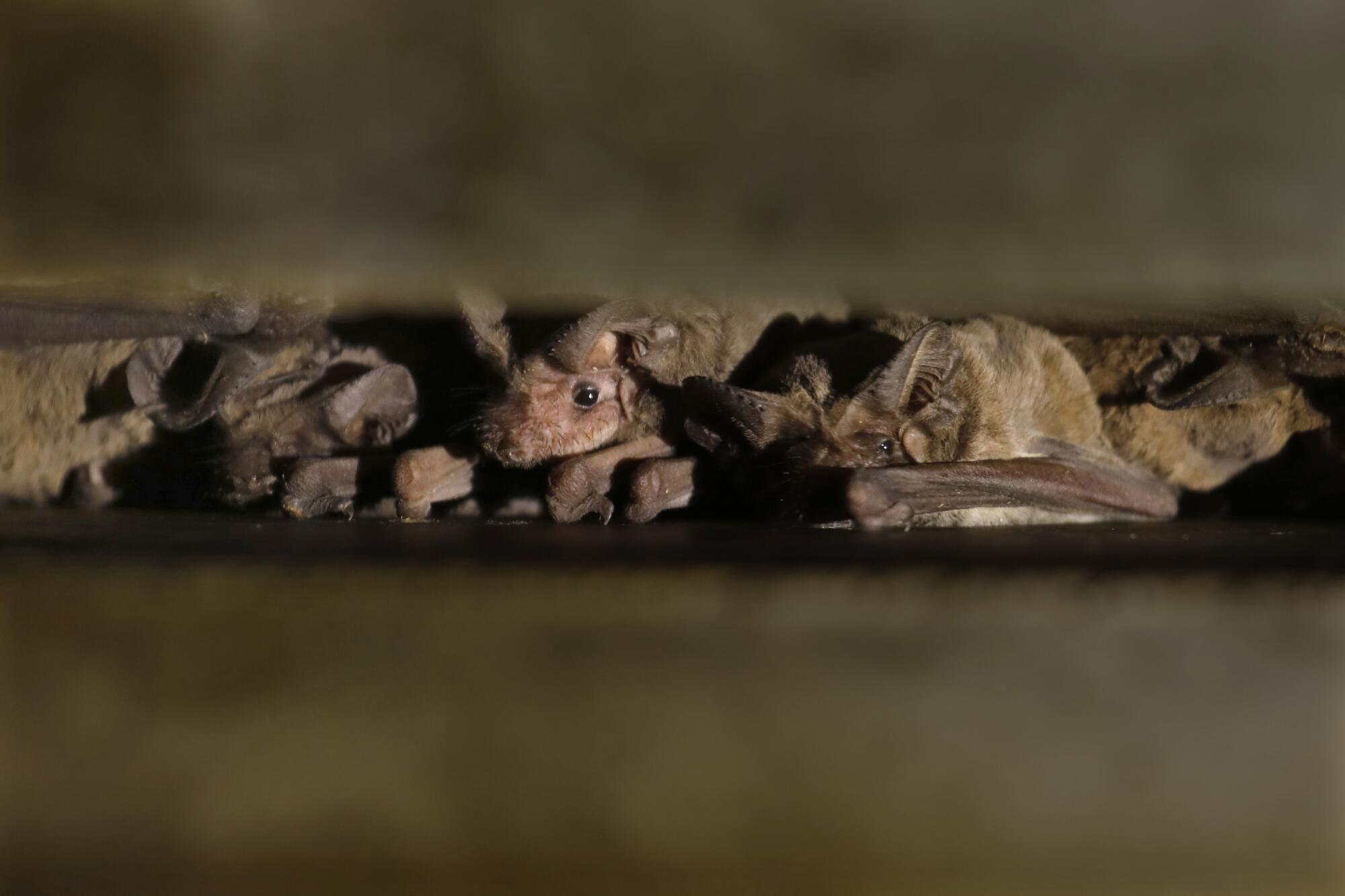
The park service researcher said she surveyed roosts from two populations in the Northern California town of Chester in 2018 and 2019. And while she detected “very, very small quantities” of the fungus, “there is much debate in the scientific community on how to interpret these low levels.”
However, following the movement of the fungus in other states, she expects to see “strong positives” in Northern California soon — assuming she can continue her research.
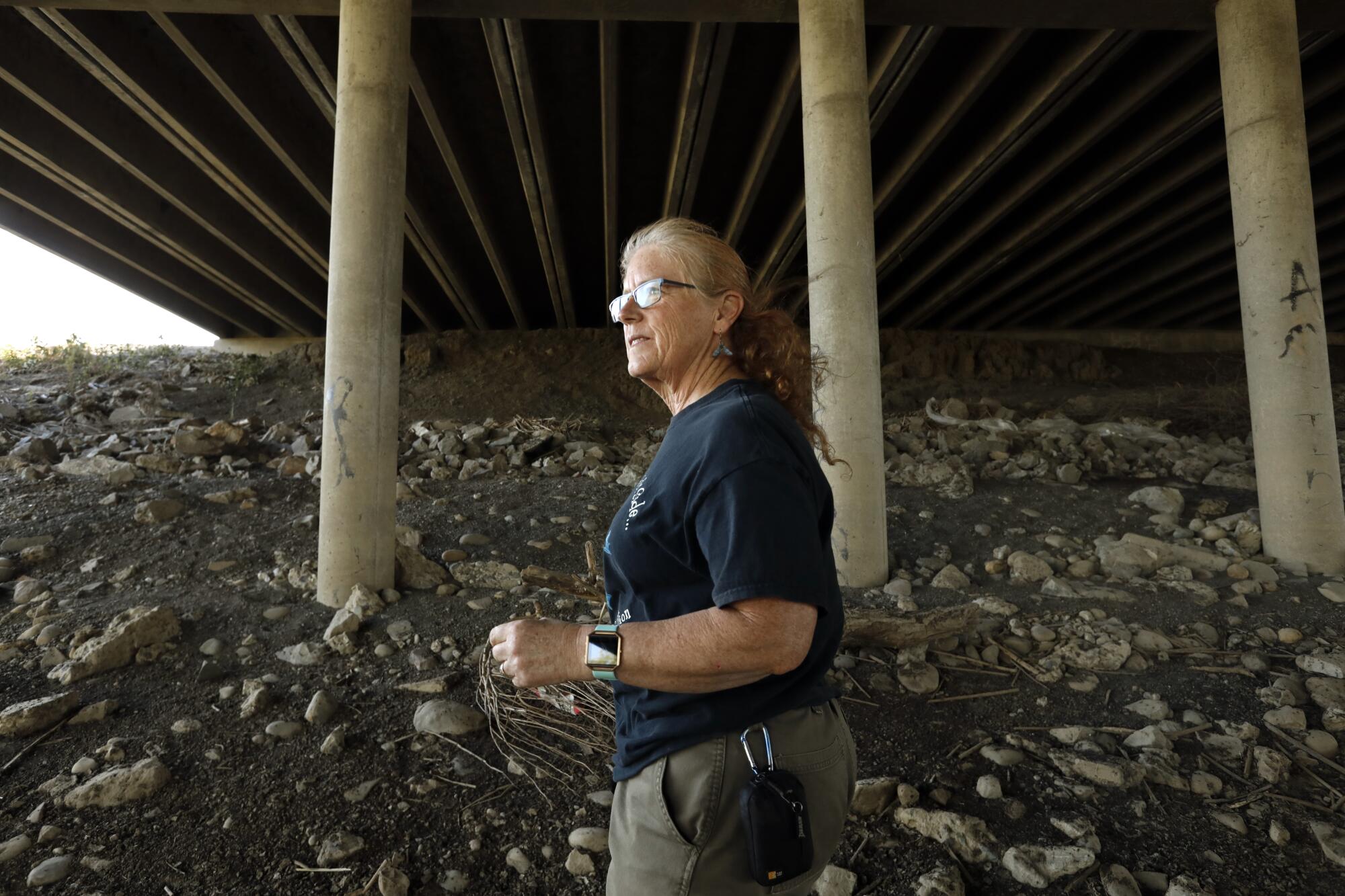
“Until we have a better understanding about the risk of transmitting the COVID-19 virus to North American bats,” she said, the government is advising that “wildlife researchers, rehabbers and wildlife control operators avoid handling or coming within close proximity of bats.”
COVID-19 is concerning, said Quirk, the bat rehabilitator, as she held a cranky, female big brown bat, while feeding it wriggling mealworms with a pair of tweezers. But she said bats face bigger threats, such as habitat loss, the widespread use of agricultural chemicals, climate change and cats.
“Bats are truly extraordinary,” she said, extolling their incredible role in managing insect populations, including mosquitoes.
She noted the experience of one rice farmer who leases farmland in the Yolo natural wildlife preserve. The farmer doesn’t need to use insecticides, she said, because the bats keep his crop insect-free.
Chris Starr and U.B. Giberson, two wildlife removers for Wildlife Command Center, a pest-control company in Sacramento, said they have a deep respect for bats since they began working in the business.
“Humans just need to learn how to live together with them,” said Starr, it’s OK not to want colonies living in your house or attic.
“But outdoors, under bridges like this,” he said, pointing at the Yolo Bypass, “they serve a vital function. Bats are good. I mean, they’re amazing.”

Los Angeles Times reporter Susanne Rust and photographer Carolyn Cole are embarking on a road journey throughout California. They aim to give voice to those in remote parts of California as they grapple with the worst health and economic calamity of our lifetimes.
More to Read
Sign up for Essential California
The most important California stories and recommendations in your inbox every morning.
You may occasionally receive promotional content from the Los Angeles Times.
